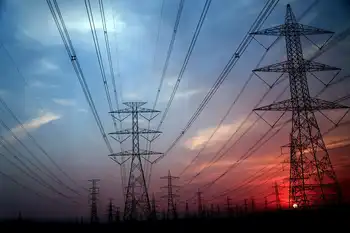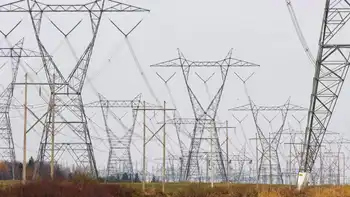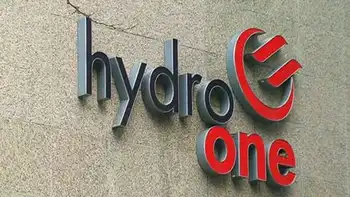Ontario to push clean energy
By Toronto Star
Substation Relay Protection Training
Our customized live online or in‑person group training can be delivered to your staff at your location.

- Live Online
- 12 hours Instructor-led
- Group Training Available
Premier Dalton McGuinty's government's long-awaited green plan is expected to have more aggressive climate change targets than Ottawa's recently announced scheme.
Sources say it is a sweeping document that will build on already announced initiatives like yesterday's plan to cut in half the number of plastic bags used by Ontarians within five years and a ban on energy-hogging incandescent light bulbs by 2012.
To that end, the government will announce greenhouse gas emission reduction targets more aggressive than federal Environment Minister John Baird's 20 per cent cut from current levels by 2020.
The Liberals are not expected to match the standard promised by NDP Leader Howard Hampton – a cut in emissions to 6 per cent below 1990 levels by 2012, as set out in the Kyoto Protocol. But they will eclipse Progressive Conservative Leader John Tory's promise of a 10 per cent reduction in 1990 emissions by 2020.
Environment Minister Laurel Broten declined to comment on specific targets until after the "all hands on deck" plan is released next month, but emphasized it would improve upon Tory's proposal.
"A good plan requires stringent targets and a game plan as to how to get there with steps for the government to take and steps to help Ontarians do their part," said Broten, who has led the way on curbing the use of plastic bags and inefficient light bulbs and championed the controversial FLICK OFF conservation program.
"We have been coordinating a multi-ministry approach to climate change. We've made a number of announcements as to steps that we're taking because we are not waiting. We're getting started," she said in an interview.
"We've always said it's a comprehensive climate change plan – all ministries on board and the premier has spoken to that effect."
The green plan announcement will come a week before the province's Shared Air Summit, which will bring together government, industry and academic leaders to discuss climate change.
Under the province's green plan, the last of Ontario's high-polluting coal-fired generating plants will close by 2014 – although the Liberals, who originally promised in 2003 to shutter them by this year, will not announce a firm date for political reasons – and will likely burn a higher percentage of cleaner biomass, like corn, wheat husks, and wood pellets.
The temporary measure of replacing up to 25 per cent of the coal with agricultural and wood waste would reduce greenhouse gases and other emissions from the power plants, such as mercury. Burning biomass is considered "carbon neutral" because the greenhouse gases that are released are reabsorbed in new plant life, meaning no net addition of emissions to the atmosphere.
Insiders say the Liberals, who face a re-election challenge in the Oct. 10 vote, believe the public will like the "optics" of that.
As part of the green plan the government is also going to announce another round of bidding on large-scale renewable energy projects.
Sources say a major wind farm project will be part of that. The province hopes to generate an additional 1,000 megawatts of electricity from renewable sources, which has the potential to power 250,000 homes.
The government is also expected to announce a new clean energy standard offer plan to complement a successful similar program launched last year to support development of small-scale wind, solar, biomass and hydroelectric projects.
Under the new program, the Ontario Power Authority would pay a set price for "low-carbon" electricity that comes from heat recycling, energy-from-waste facilities, and the efficient use of natural gas and methane.
Like the renewables' program, the clean energy program would only support projects 10 megawatts in size or under. It's estimated that up to 3,000 megawatts of electricity could be profitably produced by recovering waste energy from industrial processes.
"The clean energy program will be part of it," said one source who intends to participate in the program.
The province is also expected to expand the Leadership in Energy and Environmental Design (LEED) standard to promote the construction of efficient new buildings, and announce further energy-saving reduction targets in its own offices.
Right now, the government aims to have all Ontario Realty Corp. buildings reduce their energy consumption by 10 per cent before year's end.
So far, the ORC is at an 8.8 per cent reduction, so the Liberals are confident a new savings goal can be announced – and achieved.
Recently, the province vowed to use 90 per cent less electricity to cool Queen's Park by switching to the Enwave's deep lake water-cooling system and using clean energy from Bullfrog Power at the environment ministry's head office on St. Clair Ave.
As well, the Liberals hope to get more motorists in hybrid cars, such as the Toyota Prius and versions of the Ford Escape and the Ontario-made Honda Civic. Such vehicles are already eligible for provincial tax breaks of up to $2,000 per car – and additional federal breaks of up to $2,000 – and Queen's Park is considering upping its credit.
McGuinty said many small steps could cumulatively have a big impact on slowing global warming.
"Somebody recently said that when it comes to dealing with climate change and environmental issues generally, it would be a mistake to look for a silver bullet and we should be deploying silver buckshot," he told reporters.











